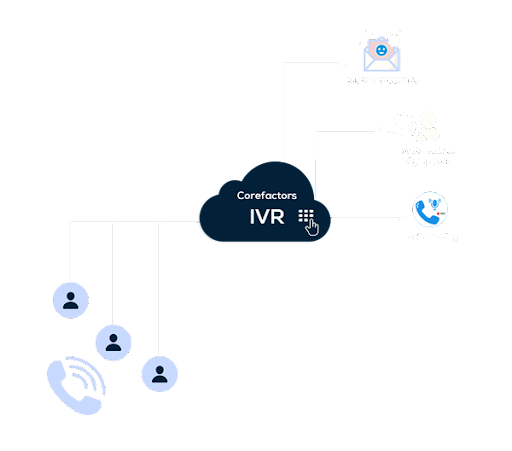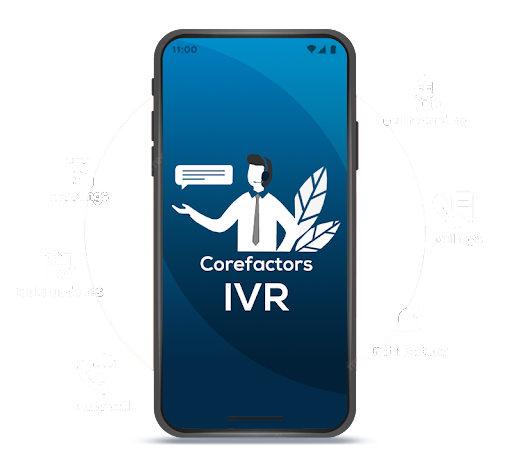Choose from a wide range of toll free 1800/1860 series or a mobile number or any local telephone series that suits your business. Integrate it with Corefactors AI-powered CRM for enhanced customer experience and better efficiency.
Manage outbound and inbound calls effortlessly and efficiently by integrating virtual number and IVR number with Corefactors AI-Powered CRM. Choose from a wide range of 1800/1860 series or a mobile number or any local telephone series that suits your business

Connect to prospects and customers effortlessly with Click2Call, Auto Progressive Dialer and IP calls features.
Access unlimited calling channels and seamlessly answer calls with zero call drops.
Create smart multi-level IVR and handle inbounds calls economically and efficiently with automatic call routing.
Enhance productivity and call quality with auto call recording feature and call dashboards.
Enrich customer experience and achieve higher efficiency and productivity with streamlined and automated engagements using unified AI-powered platform to manage all customer communications across functions - sales, marketing, support and success.

Automatic lead capture and distribution with a centralized customer profile details and engagement records for easy access.
Robust ticketing system with auto ticket creation and assignment, multiple SLA management handling and more.
Connect and engage prospects and customers over call, email, SMS and WhatsApp using personalized messages at scale.
Pre-define engagement workflows and set up automated communications with prospects and customers across journey.
Empower your teams to never miss any opportunity, follow ups, meetings, SLA with automated alerts, triggers, notifications and more.
Monitor incoming calls, outgoing calls, ticket closures, teams productivity and performance, sales pipeline,marketing campaign reports, and more.

Access, track, and manage customer relationship across journey from anywhere and at anytime with your smart mobile.
Access IVR and other call logs, call recordings, and other customer details.
Initiate instant conversation through auto call connection or other available channels and reduce response time.
Update details, schedule follows ups, meetings, and other operations.
Get alerted and notified about upcoming meeting, tasks, follow ups, and take necessary actions.
Get 15 Day Free Trial. No credit card required.
No more silos between teams | No more fragmented data | No more hassle with multiple tools and vendors

Besides the advantages mentioned above, with Corefactors you get a guarantee on

Get personalized dedicated support from our experts via call, E-mail, SMS, chat, etc. Our customers say, "You are a king, if you are a Corefactors customer".

Our motto is to provide you with the best of service, ensure uninterrrupted quality call,. The solution is designed to ensure that it fits your growing needs with a 99.9% uptime.

The unified platform for IVR and customer relationship management helps you save 30% (40,000 per user per year!). This solution is best priced in the whole industry, when compared to the features it offers.
-Zuheb Sheikh, AVP of Ketto

-MR. Aniket, Telecalling Head, HMPL

-Akash Gupta, Co-Founder & CEO, ZYPP Electric